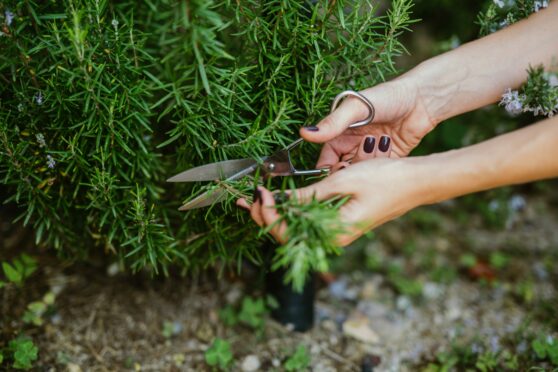
Good news for those of a green-fingered persuasion: new research reveals that an hour of gardening a week can have significant health benefits.
The British Journal of Sports Medicine study found that taking part in muscle-strengthening activities – such as lifting weights, resistance training or gardening activities including digging and shovelling – for 30 to 60 minutes each week, has been linked to a reduced risk of premature death and some major diseases.
However, pottering around with a few plants isn’t enough to make a difference. The researchers specified “heavy gardening” and said that people reap the most benefits when they participate in both aerobic and muscle-strengthening activities.
Fitness experts reveal the best gardening jobs to boost your physical wellbeing…
Digging
“Digging is one of the best gardening jobs for building overall strength,” says Alice Williams, qualified personal trainer at OriGym Centre of Excellence. “The motion of pressing a shovel down with your foot and turning over the soil engages a whole range of muscle groups in both the lower and upper body, from the quads to the shoulders.”
Weeding
It may not be the most enjoyable part of gardening, but weeding by hand is an effective strength exercise.
“When you bend over to pull out a dead rotten root from a flowerbed, you have to use a lot of back and leg strength, alongside grip strength too,” says performance coach and Bio-Synergy ambassador Jamie Lloyd, which is similar to doing deadlifts in the gym.
“Deadlifts are great, as they tax the whole body and replicate the same movement when you go to pull that giant turnip out of the ground – a great lower-body pull exercise that will prepare you for anything.”
Mowing the lawn
As long as you’re not cruising on a ride-on mower, cutting the grass is another great strength-building gardening job.
Williams says: “It has all the same benefits of pushing a prowler sled in the gym. It requires engaging your glutes, quads, hamstrings, core and upper body all at once, making it a tough full-body workout, similar to using a cross trainer machine.”
Lifting and carrying
“Carrying bags of compost, soil amendments, stones or vegetables in front of you strengthens your glutes, quads and entire midsection,” says Lloyd, so try ditching the wheelbarrow and ferrying bits and bobs across the garden yourself.
Do be careful not to overload yourself, and always bend at the knees when lifting anything off the ground. “You might be familiar with doing the farmer’s walk with a kettlebell at the gym,” says Williams. “Carrying two buckets of soil across your garden can have the same results!”
Raking
Not only will it make your lawn look pristine, raking away fallen leaves gets your muscles moving.
“The motion of raking will work your whole upper body, but particularly the back and pectoral muscles,” says Williams.
Lloyd likens raking to “row” exercises, where you bend over and pull dumbbells close into your chest: “Rows are like inverse push-ups. Everything a push-up does for your chest and pushing ability, rows do for your back and pulling ability.”
Cardio
“As well as building muscle strength, gardening is also a great form of cardio,” says Williams.
“Without even realising it, you will find yourself raising your heart rate and working up a sweat as you dig, mow and move heavy things around the garden. In fact, raking and pruning can burn about 200 calories an hour, while mowing can burn up 300 calories.”

Enjoy the convenience of having The Sunday Post delivered as a digital ePaper straight to your smartphone, tablet or computer.
Subscribe for only £5.49 a month and enjoy all the benefits of the printed paper as a digital replica.
Subscribe